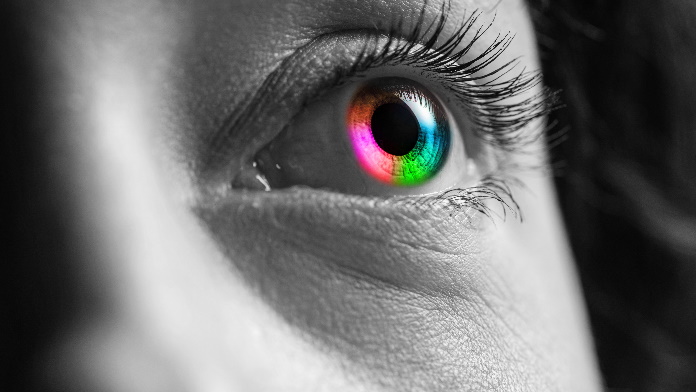L’acromatopsia it is a rare sight defect that manifests itself with complete or partial color blindness: those affected, in fact, see the world in black and white. This pathology is caused by a malfunction or inactivity of the cones which, together with the rods, are light-sensitive cells (photoreceptors) present in the retina and responsible for daytime vision.
What happens in the retina of those with achromatopsia
I cones, mainly concentrated in the center of the retina, they specialize in daytime vision. They allow humans to adapt to light and to perceive colors. THE rods, located in the periphery of the retina, are responsible for night vision. In a healthy eye these two types of cells work in synergy, allowing you to see in any lighting condition. In the retina of those suffering from achromatopsia, the cones work little or do not work at all and therefore one must rely entirely on the vision of the rods. As a result, those who suffer from this pathology have poor visual acuity and cannot perceive colors.
What are the symptoms?
Symptoms of achromatopsia vary from person to person. Achromatopsia doesn’t involve just one partial or total color blindness but it is also associated with one very low visual acuity. Furthermore, those with this pathology present aextreme sensitivity to light (photophobia) and the nystagmus, an involuntary oscillatory movement of the eyes, which have great difficulty in fixing objects.
Why does achromatopsia occur?
Congenital achromatopsia results from a mutation of a recessive gene (Cnga3) on chromosome 2, which prevents the development of cones on the retina. It’s a hereditary disease, which is transmitted if both parents are carriers (even healthy and in this case the couple will have a one in four chance of having a child with achromatopsia).
How is the diagnosis made?
L’electroretinogram (Erg), which measures the response of the retina to light, is the fundamental test to ascertain the presence of achromatopsia. Other important tests for evaluating color sensitivity are the New color test di Lanthony and the Roth’s 40 or 100 Hue test – Farnsworth.
How is achromatopsia treated?
There is currently no cure. However, photophobia can be validly countered with very dark sunglasses (with specific filters for achromatopsia), often accompanied by wide-brimmed hats. It is not possible, however, to curb the nystagmus. Achromatopsia does not allow you to practice some sports and drive a car (people with this vision defect cannot have a driving license). The use of the computer is only possible for a few hours a day and if the characters and images on the screen are enlarged.
The importance of having an association
Since 1999, the support to patients has beenAssociation of Italian Acromates ONLUS.
Read also …
–


